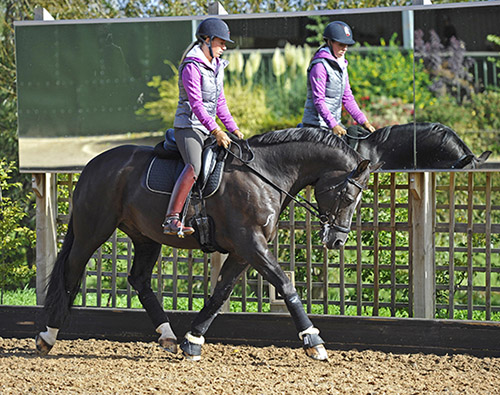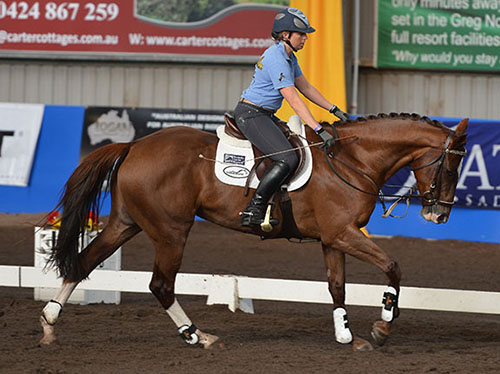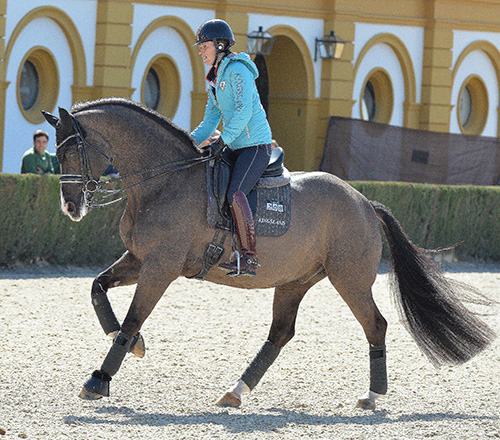“The main thing for many riders is the stabilizing of the outline of the horse. That is really what is lacking, consistency of outline. The next step is the suppleness, which is also lacking in lots of horses, especially event horses.
Charlotte and Valegro demonstrate – Kit Houghton image
“I think a lot of the eventers haven’t realised that the neck is the basis of the way a horse learns to balance himself, and that’s where you can unlock the incorrect tension. It was mainly a question of teaching riders more about stretching exercises, and bending exercises.”
Eventing medal winner for Australia, Megan Jones, shows event riders can let their horses stretch too…
“Riders need to learn to ride the horse to the bit, and not to block from the bit back. The horses have to go in a long neck, but many horses get in a tense, short outline, and that creates the mistakes in the test. By using suppling exercises, lots more stretching exercises, and more work in canter rather than hours of uncomfortable sitting trot. They all try to sit at the trot, but it’s not their fave, they like to be off the saddle, not on the saddle. I teach them that until the horse is swinging, they can’t sit. I don’t sit on my young dressage horses until they are at least five or six – I wouldn’t do sitting trot on a younger horse. An eight-year-old eventer can sometimes be as backward as a four-year-old dressage horse… and yet they are trying to do sitting trot and the movements of the test.
More canter work teaches riders how to get the horse to take the hand, be in a proper balance on its own, in a long frame… after that they can come to the trot work.”
Read more:




